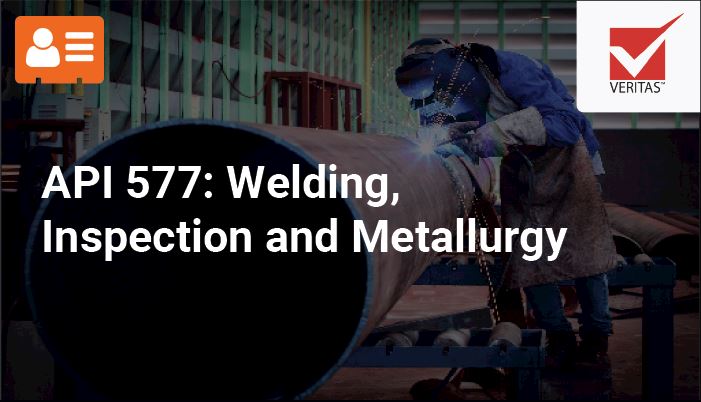A Comprehensive Guide to Welding Inspection Madison Specifications
A Comprehensive Guide to Welding Inspection Madison Specifications
Blog Article
How Efficient Welding Assessment Boosts Structural Integrity and Long Life
In the realm of building and construction and design, the significance of welding assessment can not be overstated, as it plays an essential role in making certain architectural honesty and prolonging the life-span of projects. Join the exploration of how reliable welding assessments can transform possible susceptabilities right into toughness, adding to the enduring success of buildings.
Significance of Welding Assessment
Guaranteeing the structural stability and safety of bonded building and constructions requireds rigorous welding evaluation procedures. Welding evaluation offers as a critical guard in the building and production sectors, where the strength and toughness of joints significantly impact the overall performance of structures.
In addition to safety, welding assessment plays a vital role in quality assurance. Sector criteria and codes, such as those from the American Welding Society (AWS) or the International Organization for Standardization (ISO), demand adherence to strict guidelines, underscoring the significance of examinations in meeting these specialist and legal responsibilities.
Key Inspection Strategies

Ultrasonic Evaluating (UT) utilizes high-frequency acoustic waves to find subsurface problems, supplying specific information about weld stability without creating any type of damage. Radiographic Examining (RT), involving X-rays or gamma rays, provides a thorough photo of the weld's internal structure, exposing concealed flaws. Magnetic Fragment Checking (MPT) is one more non-destructive approach, particularly effective for detecting surface area and near-surface interruptions in ferromagnetic materials.
Penetrant Testing (PT) involves the application of a fluid color to disclose surface-breaking flaws, using a uncomplicated and cost-effective service for non-porous materials. Each method has its details applications, toughness, and limitations, and usually a combination of approaches is used to accomplish detailed examination outcomes. Proficiency of these methods boosts the reliability and toughness of bonded structures, aligning with safety and security and performance assumptions.
Identifying Common Defects

Porosity, identified by gas pockets within the weld, decreases the weld's toughness and sturdiness. Fractures, which can happen during or after welding, position significant risks due to their possible to circulate under stress.
Incomplete blend, where the weld metal fails to bond entirely with the base product, undermines the architectural stability, leading to weak joints. Slag inclusions occur when non-metallic materials are trapped in the weld, endangering its stamina and top quality.
Identifying these issues through precise examination methods, such as visual exam, ultrasonic screening, or radiography, is critical. Addressing these problems makes sure weld top quality, inevitably supporting the architectural stability and safety of the built environment.

Enhancing Architectural Efficiency
Recognizing the relevance of recognizing common weld flaws normally results in discovering approaches for enhancing structural performance. The fundamental technique for improving performance entails employing sophisticated welding techniques discover this and materials that reduce issue incident. Utilizing top notch filler products and ensuring appropriate warmth control can substantially reduce concerns such as porosity and cracking, consequently improving the weld's integrity.
Incorporating cutting edge welding modern technologies, such as laser welding and friction mix welding, more enhances structural resilience. These techniques supply remarkable precision and reduced thermal distortion, directly influencing the durability and stamina of the welded structures. Additionally, taking on automated welding systems can guarantee repeatable and regular weld top quality, lessening human error.
Additionally, executing rigorous pre-weld and post-weld procedures is essential. Proper joint design, surface prep work, and stress-relieving procedures add to ideal weld performance. Conducting comprehensive pre-weld assessments permits for very early detection of potential issues, helping with timely corrections before they compromise the framework.
Lasting Advantages of Assessment

Through cautious examination techniques, the long-lasting benefits to structural honesty come to be increasingly noticeable. Regular and comprehensive welding evaluations play a critical duty in preventing structural failures by determining flaws and inconsistencies early in the building and construction procedure. This aggressive strategy guarantees that possible issues are resolved before they can jeopardize the safety and security and toughness of structures. By capturing issues early, expensive fixings and downtime are reduced, inevitably extending the life-span of the infrastructure.
Moreover, normal examinations contribute to preserving conformity with market requirements and guidelines, consequently staying clear of lawful and redirected here economic effects. This adherence to quality control not only enhances the reliability of the structure but likewise cultivates count on amongst stakeholders, consisting of clients, designers, and regulatory bodies. The detailed documentation of assessment end results functions as a beneficial resource for future repair and maintenance efforts, helping with educated decision-making.
Furthermore, effective assessment methods sustain technology by including innovative modern technologies such as non-destructive screening and electronic imaging, which can enhance accuracy and performance. This technical assimilation additionally highlights the commitment to quality in structural integrity. Eventually, buying meticulous welding examinations is a prudent strategy that generates substantial lasting advantages, protecting both the economic and physical investment in infrastructure tasks.
Final Thought
Efficient welding evaluation plays a critical role in boosting architectural integrity and longevity by identifying issues early in the building process. Making use of strategies such as aesthetic evaluation, ultrasonic testing, and radiographic testing makes certain the discovery of problems like cracks and porosity that jeopardize weld toughness. Rigorous assessments ensure compliance with sector criteria, thus lengthening the lifespan of structures, decreasing costly fixings, and fostering stakeholder rely on the reliability and security of bonded constructions.
In the realm of building and design, the relevance of welding inspection can not be overstated, as it plays an essential duty in ensuring structural stability and expanding the lifespan of jobs.Making certain the structural integrity and security of bonded building and constructions mandates extensive welding examination processes.Building upon the relevance of welding evaluation in safeguarding architectural stability, recognizing the crucial inspection methods ends up being imperative for effective implementation. Efficient welding inspection includes a browse this site range of methods created to examine weld high quality, making sure compliance with stringent engineering criteria - Welding Inspection Madison.Reliable welding assessment plays an essential duty in improving structural integrity and longevity by identifying problems early in the building procedure
Report this page